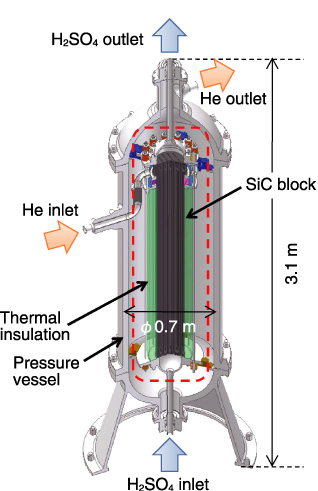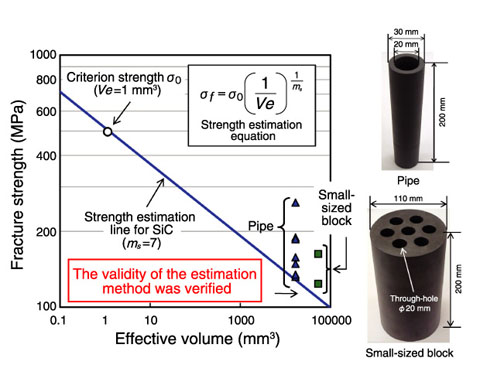
Fig.8-5 Concept of sulfuric acid decomposer for IS process

Fig.8-6 Strength estimation method for SiC structure with effective volume and validation test results
We are conducting R&D on nuclear hydrogen production by the Iodine-Sulfur (IS) process that can produce massive amounts of hydrogen from water without CO2 emission by using the heat supplied by a high temperature gas-cooled reactor.
Since highly corrosive materials such as sulfuric and hydriodic acids are used in the IS process, it is very important to develop components made of corrosion resistant materials. Therefore, we have been developing a sulfuric acid decomposer made of a ceramic material, that is, silicon carbide (SiC), which shows excellent corrosion resistance to sulfuric acid (Fig.8-5).
One of the key technological challenges for the practical use of this ceramic sulfuric acid decomposer is to be licensed in accordance with the High Pressure Gas Safety Act for high-pressure operations of the IS process. Since the strength of a ceramic material depends on its geometric form, etc., the strength evaluation method required for a pressure design is not established. Moreover, if the conventional destructive test is performed for the strength evaluation of a full-size component such as a sulfuric acid decomposer, large cost and time will be necessary. Therefore, a new strength evaluation method is required.
A critical problem in the strength evaluation of a ceramic structure is the large variation in strength. A ceramic material fractures because of the presence of small cracks or crack-like flaws in the material. The scatter of strength is a consequence of the scatter in the size and distribution of the cracks, which depends on the structure design its shape and size.
In general, the effective volume theory is one of the appropriate theories for estimating the strength of ceramic materials having different sizes by using the effective volume Ve of the materials. The effective volume theory, however, is not applicable to large-scale structures because the shape dependence of crack distribution in ceramic materials is not considered in this theory.
Hence, we propose a novel strength estimation method for SiC structures based on the effective volume theory in order to extend the range of application of the effective volume. The principle logic of the proposed method is that there is a criterion strength σ0 of a SiC structure without flaws, and an increase in flaws in the structure decreases its strength. The degree of strength decrease is estimated by using the Weibull modulus ms, which is optimized for SiC (Fig.8-6).
The proposed method was verified by performing a fracture test on small-scale SiC structures: a pipe and a small-sized block. The fracture strength of the models was higher than the value of the estimated strength. It was revealed that the strength of the SiC structures was estimated successfully by using the proposed estimation method.
We will develop a design method for ceramic apparatus with the strength estimation method in order to obtain a license in accordance with the High Pressure Gas Safety Act.
<Previous: 8-1 | Next: 9 Development of Decommissioning and Radwaste Treatment Technology >